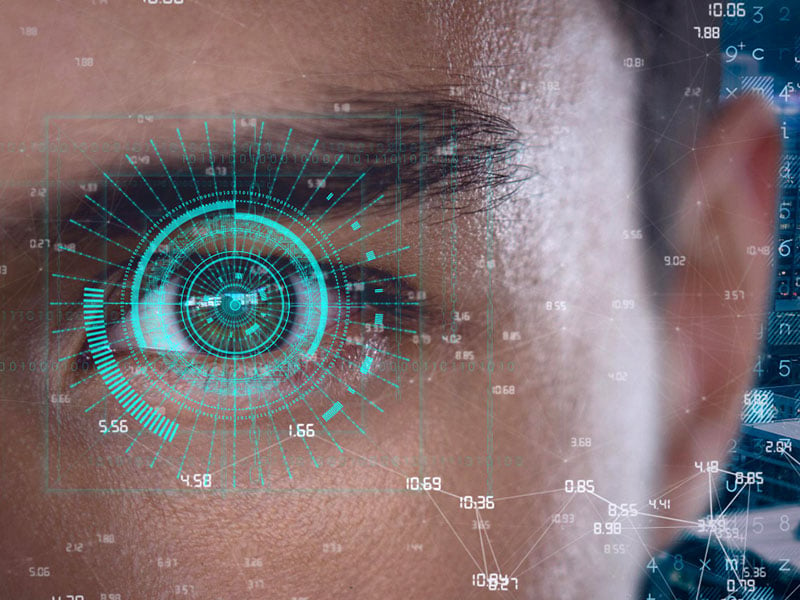What is Worldcoin and what does scanning the iris involve?
04/03/2024Worldcoin was introduced in summer of 2023 as a revolutionary project with the mission of creating a 100% secure digital identity, essentially a kind of fortified "digital passport," based on the verification of a unique and non-transferable element inherent to each human being—the iris. According to its developers, World ID will help distinguish human online activity from that generated by machines. In the first phase of the project, the creation of this secure digital identity is planned for 2 billion humans. To make this possible, Worldcoin has called on the global population to scan their iris. In return, Worldcoin compensates participants with a few tokens of its successful cryptocurrency, WLD, which has quadrupled in value within a few weeks of its initial launch. The payment in WLD tokens is not coincidental; it is part of Worldcoin's strategy, aiming to leverage the new digital passports to create a comprehensive ecosystem that provides universal and equitable access to advanced financial services for the entire global population. To achieve this, they encourage "iris sellers" to use the Worldcoin cryptocurrency on its fee-free blockchain, unlike Bitcoin, Ethereum, or other cryptocurrencies that do charge transaction fees. How does Worldcoin work? Worldcoin aims to address the issues of bots, rapid creation of fake identities, and content with artificial intelligence. It is designed, according to its developers, to provide every individual in the world with a unique digital identification. Additionally, Worldcoin promises to ensure the financial inclusion of each person in a fair and equitable ecosystem through a universal basic income. Users receive this income in exchange for allowing their iris to be scanned. To create the secure digital passport with Worldcoin, users must undergo an iris scan, which serves as proof of humanity and a unique identity on the blockchain. This process ensures that the individual on the other side of that identity is a human and not a fake profile created with artificial intelligence. In pursuit of the success of their proposal, the company offers users a small amount of their own Worldcoin tokens in exchange for iris scanning. The initial incentive of receiving free cryptocurrency, in the form of a universal basic income, is emphasized by Worldcoin advocates as the basis for the inclusive and universal nature of their initiative. This approach allows anyone to scan their iris, and the WLD tokens received in return can assist people without access to traditional financial services in starting to save and invest. How to Scan the Iris with Worldcoin? The registration process with Worldcoin involves scanning the iris with an orb, the central hardware device of Worldcoin developed by Tools for Humanity. The orb is spherical and processes all the information. Currently, Worldcoin has installed orbs in different countries, including Spain, where users can scan their iris in exchange for Worldcoins. To do this, it is necessary to download the Worldcoin mobile application, World ID, generate a QR code with it, and display it in front of the orb. The orb, upon recognizing it, will scan the user's iris, while a Worldcoin collaborator remotely oversees the operation. The orb takes less than a minute to perform the scan and validate the subject's identity. In exchange for their iris, the user receives a unique number called "IrisHash" and a cryptographic wallet with Worldcoins. "This digital passport is accepted as proof of unique humanity, which people can use in the digital world without the need to share any other data," assure its developers. What happens with my scanned iris in exchange for Worldcoins? Once the iris scan is completed, and digital identity is granted to the user, Worldcoin assures that the orb quickly eliminates the images unless the user requests their preservation. Only the set of numbers called "IrisHash" is stored for identification, without any additional biometric data. Worldcoin also commits to ensuring that users share only the necessary information they wish to share, providing verification options through linked devices or the additional facial authentication orb for high-security cases. Despite these commitments, the collection of biometric data through iris scanning for the unique proof of humanity continues to raise significant questions regarding privacy and information security. Some countries such as Brazil, France, India, or Kenya have halted Worldcoin's iris scanning. How much do you get paid for scanning your iris? Worldcoin pays 25 WLD for scanning your iris, which, according to the cryptocurrency's exchange rate in February 2024, has translated to an average of between 50 and almost €160 for iris sellers, depending on the value of Worldcoin on the day they scanned their iris. At the beginning of February, the value of each WLD unit was around two euros, and by the end of the month, it had risen to nearly seven euros. What can I spend my WLD on? 'Iris sellers' have the freedom to use their Worldcoins from the moment they receive them. They can exchange the payment for other cryptocurrencies, withdraw them in euros from a specialized ATM, or hold onto the tokens in the hope of an increase in their value. Additionally, WLD payments are already accepted on platforms such as Discord, Shopify, Minecraft, Telegram, Mercado Libre, or Reddit, among other places. Who is behind Worldcoin? Worldcoin bears the stamp of two innovative minds: Sam Altman and Alex Blania. Altman is the CEO of OpenAI and a key figure in artificial intelligence development, leading projects like ChatGPT. Blania, on the other hand, is the co-founder of Tools For Humanity, contributing his experience in creating technological tools for a more equitable economic system to this new and successful cryptocurrency.
[ ... ]Ip Location, the tool to know my ip location
If you need to check what location your internet provider is sharing with the websites you visit, with our IP locator you can instantly geolocate your IP address or any other that you enter manually. To geographically locate the IP address, you only need to be connected to the internet. If you use VPN software or connect through a proxy to locate IP address you can also use our tool. None of the data generated by the IP locator is stored in our system. @Mapa@ How can I hide my IP address so that it cannot be traced? To anonymously browse the Internet and avoid being located through the IP of your connection, there are two basic ways to do it. The first is to hide IP so that no one will be able to track our presence on the network or access our browsing data and the second is to change IP and browse through another IP address whenever we need to. Why do I need to locate my IP geographically? Locating your IP geographically is the best way to find out what data our ISP shares about the location of our connection. Depending on this location. a website whose URL is ".com" will change to "/es" if we connect from Spain, for example, and some tasks related to the sending of forms will be simplified, as they will be automatically pre-filled with some data such as your country or city, depending on your geolocation IP. As users with a geolocation IP tool such as the one we offer in Cuál es mi IP, we can manually enter an IP address and find out, for example, from where we have received a fraudulent email, if we have had access before, of course, to the IP address involved Can anyone find out my home address with an IP geolocation tool? By using a tool to locate an IP address, you can trace the IP and geolocate it through coordinates on the map, but the specific postal address is never provided. This is because our IP address is not ours, but rather our Internet Service Provider's (ISP's). So what data can they find out about me with IP geolocation? When locating the IP geographically. the only information about us that is provided is the country and city from which we are connecting, since the GPS coordinates of altitude and latitude that are shown correspond, in reality, to those of the headquarters of the company that is offering us the Internet connection service. The reason behind this is that all data related to the actual geographic address of the device used to access the Internet, i.e. our router, is not public and belongs to our ISP, which can only disclose it by court order. Why are companies interested in locating my IP address geographically? Information is power and for a company to know from where its potential customers connect is an important advantage to design marketing strategies aimed at the customer profile of a particular geographical area or country. In addition, in terms of anti-fraud, e-commerce companies can improve card payment security by identifying payment attempts from suspicious IP addresses. What is an IP address? An IP address is a special numerical combination assigned to an internet-connected device to be identified on the network. All intelligent devices need an IP address to access the Internet and interact on the network. Each device connected to the Internet has its own an individual IP address. When we access the Internet, the servers recognize our device through its IP address, allowing the two-way communication with the recipient. As we are identified with our IP address, the rest of devices can order a return response, without mistake the sender. Making a simile, an IP address would be the address that we use to write on the back of an envelope. This information identifies us as issuers and also as recipients of the return answer. To make possible this data exchange, the IP protocol was established as a set of universal rules for all the Internet operations. That means that all devices connected to Internet or to a home network, "speak" the same language and they are able to communicate each with the others. There are two types of IP address, the external IP and the local IP: • The external IP or public IP is the numerical combination address assigned to us by our Internet service provider (ISP). This public IP identifies us as Internet users when we are connected. If you want to find the IP of your computer, your tablet or your Smartphone, you can find out this immediately by accessing the home page of “What is my IP” or using our speed test service that, in addition to this information, will inform you about the quality of your Internet connection. • The local IP address or internal IP is the one the router assign to all the devices connected to him and identifies each of these devices, individually, in the home network. How to locate an IP address? If you want to know how to find out where an IP address is from, you should know that it is not always easy to find out the IP origin of a connection, because there are different systems to hide the IP. Some users use these systems for security reasons or to simulate, for example, their IP location in another place and thus have access to Internet services not enabled in the place where they are located. Now, if the user does not use any resource to mask the IP, find out the IP of the computer or any other device connected, for example, to our website, it is as simple as use IP geolocation services such the one offered in “What is my IP?” and you will immediately find out the IP origin of any computer that you are interested in track. Knowing the IP location of our clients is an advantage when we are designing, for example, our marketing strategies and a good tool, also, to improve network security, as it allows us to locate suspicious IP addresses. In addition, with the IP geolocation service you can also verify the location that your Internet provider shares about you. It should be clarified that this location provided by IP geolocation services is never the specific address of our home or where we are located. The data actually are from the operator node in our area that is offering us the connection service to the internet network Therefore, the geolocation information will be the country and city from where the connection is made, but not the address where the user is located, because this specific tracking of the user address is protected by law and this data can only be provided by court order.
[ ... ]Where can I watch the Spanish Soccer League, on TV or via Streaming?
16/06/2023This new season of LaLiga Santander will be again, at least for the time being, a competition marked by restrictions on access to stadiums and that is why more than ever, watching LaLiga on television will become the main option for many fans to follow soccer from home. If you are one of those who do not want to miss the LaLiga Santander matches live, then find out here where to watch the Spanish League on TV or via Streaming. How to watch LaLiga on TV? Once again this season, Gol TV repeats as free-to-air soccer and sports channel on DTT. This channel offers one free match per day, which can be watched by tuning in to the channel on television or through Gol's website. You can access this channel completely for free and although the teams that play each day's match always vary, there are no matches involving FC Barcelona, Real Madrid, or teams playing in European competitions. How to watch soccer on Movistar+? So if this deal doesn't suit our needs and what we are looking for is a channel where we can watch all the LaLiga matches (or almost all of them), Movistar+ offers 9 of the 10 matches of each day, always one involving Real Madrid or Barcelona. In order to watch LaLiga Santander matches live on Movistar+ we must be subscribed to a Movistar package containing "Movistar LaLiga": Fusión Selección with LaLiga, Fusión Selección Plus with Fútbol and Fusión Total Plus. Watching soccer on Movistar+ offers practical functionalities such as being able to activate the channel on any of our devices or use the live control to replay any play whenever we choose, return to the beginning of the match or return to the live broadcast whenever we want. What can I watch on Orange TV? Another network that offers LaLiga on television is Orange TV, which after reaching an agreement with Telefónica, owner in Spain of the television broadcasting rights of the main soccer competitions, invites its customers to enjoy every week of soccer, the 10 matches that are played every day, including all Real Madrid and FC Barcelona matches in 4K resolution. In this case, to watch LaLiga on Orange TV we must be subscribed to one of the three Orange packages that include soccer: Love Total, Love Total Plus, or Love Total Plus 4. How to watch LaLiga via streaming? If due to location, mobility, or any other reason we prefer to watch LaLiga via streaming instead of on TV, we also have several options at our disposal. As we said before, Movistar+ offers the possibility of watching soccer on your devices, wherever and whenever you want, even from abroad. To access the service, you only need to have a Fusión package that includes soccer, activate your user, and access Movistar+ with your passwords on any of the compatible devices connected to the Internet (former Yomvi service). Thus, as long as we are subscribed to a package that includes the match, we will be able to watch it on all our devices, including the Smart TV. And if we are away from home we will be able to do it on smartphones, computers, and tablets. Where to watch the Spanish League from the United States and Canada? All LaLiga matches in the United States are broadcast live on ESPN+, the subscription-based sports platform owned by Walt Disney Direct-to-Consumer & International, which offers live streaming coverage and on-demand replays of LaLiga Santander matches. ESPN+ has broadcast rights to the Spanish league for eight seasons in the United States and also in Canada, where it offers full coverage of LaLiga matches to Canadian viewers through TSN.ca, RDS.ca, and the TSN and RDS apps. In addition, watching the Spanish Premier League in Latin America is possible through ESPN 2 in most countries and through some platforms such as Fox Sports Web or Now Net and Claro in Brazil. Browse the Internet safely and securely
[ ... ]The use of magnetic tapes to store data is growing
11/05/2022Although cloud storage continues to be a growing resource for many companies to promote hybrid work environments, for security reasons, many other companies have decided not only to return to hard drives, SD cards or pen drives, but even to magnetic tapes. According to the Swedish firm Sweclockers, storage on this format skyrocketed in 2021 and grew, compared to the data recorded in the previous year, by 35%. Being a format that is not connected to the internet and therefore free from the threats of ransomware and malware, magnetic tapes are increasing their popularity again and companies such IBM, HP or Seagate/Quantum have already launched updated versions of these tapes on the market that include Linear Tape-Open (LTO) technology and high storage capacity, according to the current needs of companies. The main difference from other digital storage media is that magnetic tapes can only read and write data sequentially, and this cannot be done simultaneously.
[ ... ]





